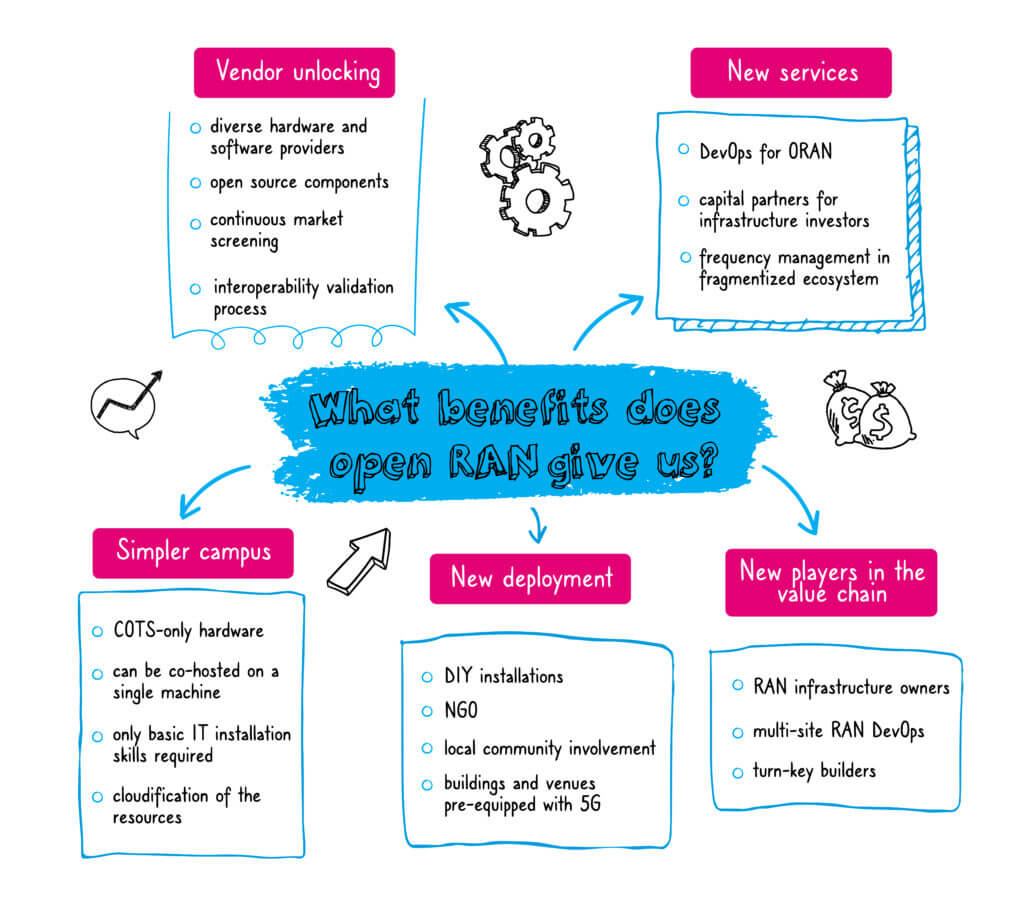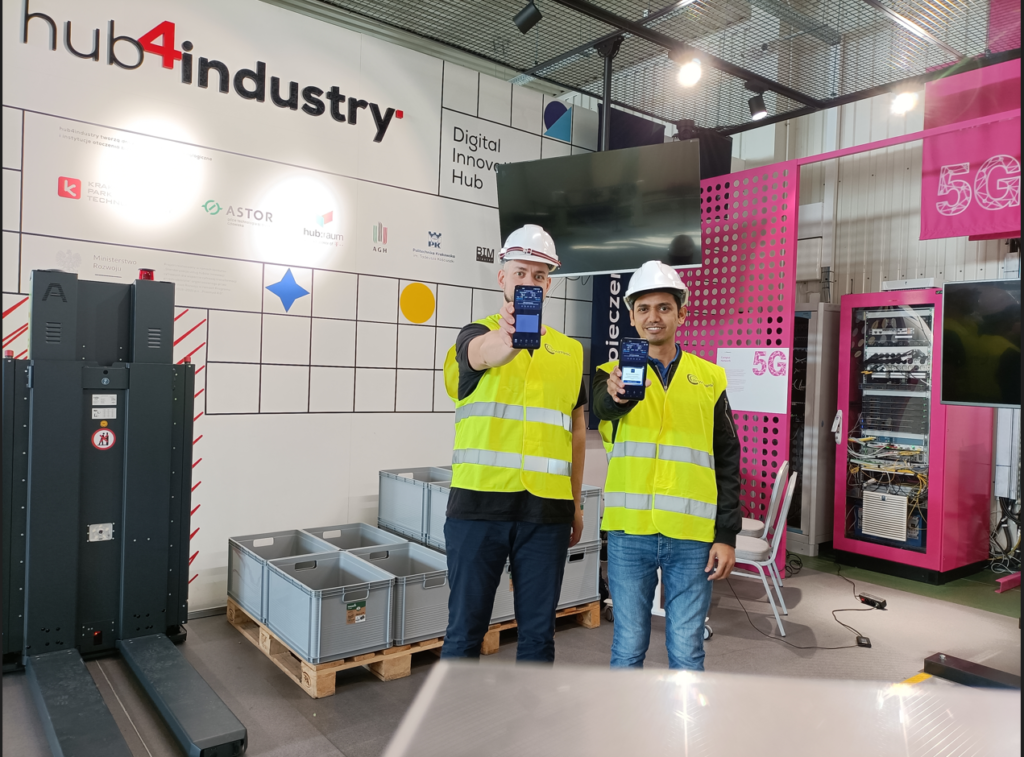In autumn 2022, we received news worth shouting about. The European Commission had accepted our application for funding to establish a European Digital Innovation Hub, or EDIH. This was a huge deal! It proves our ability at hubraum to reach our goals, collaborate with public institutions, form multilateral partnerships and secure grants. At our EDIH you could test out a variety of solutions: Software Defined Networking, cybersecurity, 5G connectivity and IoT. But our EDIH also had one crucial tech edge over the competition: Open RAN.
Arguably because we’d already proved ourselves with our Digital Innovation Hub or DIH. This was established back in 2019 after the Polish Ministry of Entrepreneurship and Technology announced a call for papers to set up DIHs across the country. We were accepted and formed a consortium that included KPT — Krakowski Park Technologiczny, Astor — as well as industrial robotics company, hubraum, two universities and other partners.
Our goal? To showcase the benefits of Industry 4.0, 5G connectivity and digitization for production. We set up hub4industry. This was part showroom, part living lab where startups could test and validate their Industry 4.0 and Industrial IoT products. As part of our work with our DIH, it was time to step things up. Together with the company IS-Wireless, we decided to install a 5G Open RAN campus network. We believe this is possibly the first one in Poland.
Traditionally, when constructing a radio access network, you would use the hardware and software from a single supplier. But Open RAN is more flexible than this. You can get the hardware from one company and the software from another. It opens up the market to innovative small companies who might not have the manpower or funds to create solutions across the entire network ie. to provide the orchestration software, the radio antenna, etc.
We spoke to Rafal Sanecki and Artur Chmielewski from IS-Wireless about what this tech means. What benefits does Open RAN bring with it? "When the ecosystem opens, you can really see the evolution and the revolution,” says Artur. He suggests we think back to 100 years ago, when Ford was producing cars and doing everything on their own. Today, when cars are produced, the pieces come from different vendors. "If this hadn’t happened, this openness, today we would be driving maybe modern but still very similar cars to the Ford car of 100 years ago.” Openness brings innovation, he insists. When you get more companies working on the same product, the race begins.

Plus, there’s also the fact that competition drives down prices — there’s a good chance everything will be cheaper, he says. He explains that if you have limited vendors, there’s not much choice, but it’s also bad for many other reasons. For one thing, you have to just trust that they are the best at security (and if you have your doubts, you have to check that yourself). Plus, the market is effectively closed to new players, who don’t have the funds to compete. "There are so many people and innovative companies and talents in the market who are just waiting to enter the area."
Tech innovation is like jazz, he says. Companies riff off each other — so Open RAN will unlock an exciting new era. Here, he says, you can be part of creating the engine that powers mobile networks. It’s also exciting because of the transition from 4G to 5G: XR glasses in daily use, autonomous transport, connected robots — all of these things are within reach.

It also offers benefits for security. Normally, if there’s a problem with one vendor, you’d have to replace the whole network. But not in this case, Rafal points out. "Open RAN is beautiful because it’s like lego bricks. You can just remove one part and replace it with another vendor you’re happy with."
According to the Dell’Oro research group, global cumulative Open RAN revenues are now projected to approach $20 billion over the next five years. This would mean they would account for around 15% of the 2026 RAN market. It’s safe to say, the future looks bright.



